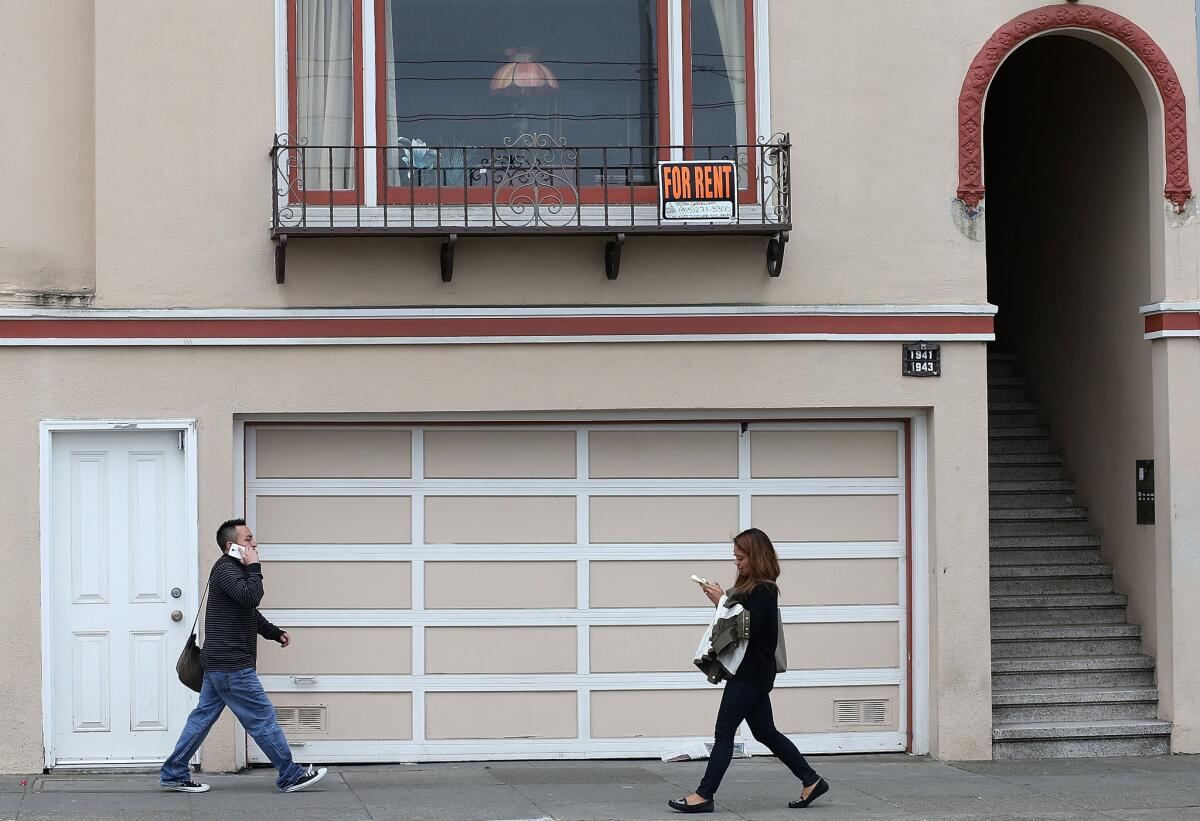Rent Watch: Does landlord have to install an elevator for disabled tenant?

Under the Fair Housing Act, if a building does not already have an elevator, it has no duty to install one. Above, an apartment for rent in San Francisco.
Question: My husband was recently injured. As a result, he now has a disability that makes it very hard for him to walk. He has to use a wheelchair to get around. We live on the second floor of our rental apartment complex and there is no elevator.
My brother lives downstairs and helps my husband get down the stairs when he has to go to a doctor’s appointment. I do worry, however, about what would happen in an emergency.
Does my property manager have any duty to put an elevator in the building now that my husband has this disability? Or can we move to one of the first-floor units?
Answer: For some multi-family dwellings, the Fair Housing Act provides rules for accessibility for people with disabilities, including whether the building has a duty to install or maintain an elevator.
For buildings that have been designed and constructed for first occupancy after March 13, 1991, and for buildings with four or more units, the rules of accessibility are determined by whether the building already has an elevator.
If a building does have an elevator (freight elevator included), then all of the units as well as the public and common spaces must be disabled-accessible. For buildings without an elevator, only ground-floor units and any public and common spaces must be disabled-accessible.
Under the Fair Housing Act, if a building does not already have an elevator, it has no duty to install one.
If a building was constructed by federal, state or local government bodies, or constructed with federal, state or local government funds, it may be subject to other laws. These laws include the Rehabilitation Act, the Americans With Disabilities Act and the Architectural Barriers Act, which have different rules for accessibility than the Fair Housing Act.
Even if a housing provider has no duty to install an elevator for a tenant with a disability, it is possible for the tenant to request a reasonable accommodation to move to a first-floor apartment.
If there are no first-floor apartments available, a housing provider is not required to evict one of the first-floor tenants to give the apartment to the person with the disability.
In that situation, the tenant with a disability can request to be placed at the top of a waiting list so that he can get a first-floor apartment as soon as one is available. Or the tenant can ask the landlord to determine whether any first-floor tenant is willing to swap apartments voluntarily.
Resources: https://www.nolo.com/legal-encyclopedia/renters-rights
Van Deursen is director of Dispute Resolution Programs for Project Sentinel, a Bay Area nonprofit. For more information, contact Project Sentinel at 1-888-324-7468, info@housing.org, visit www.housing.org or contact your attorney or local housing agency.






